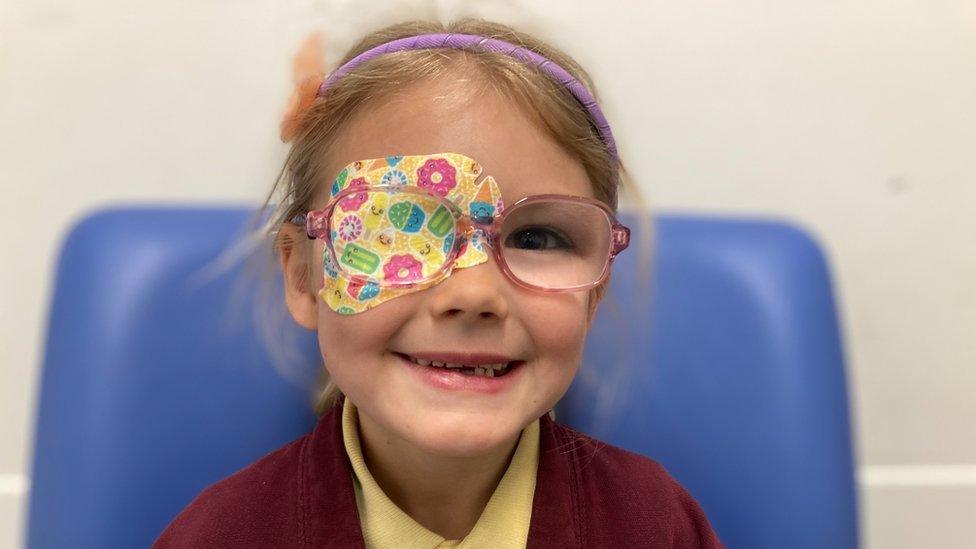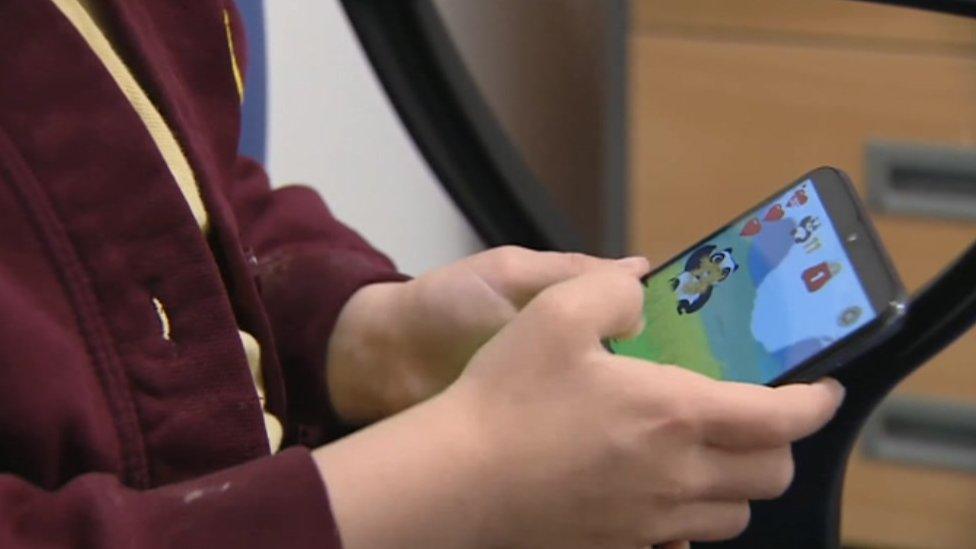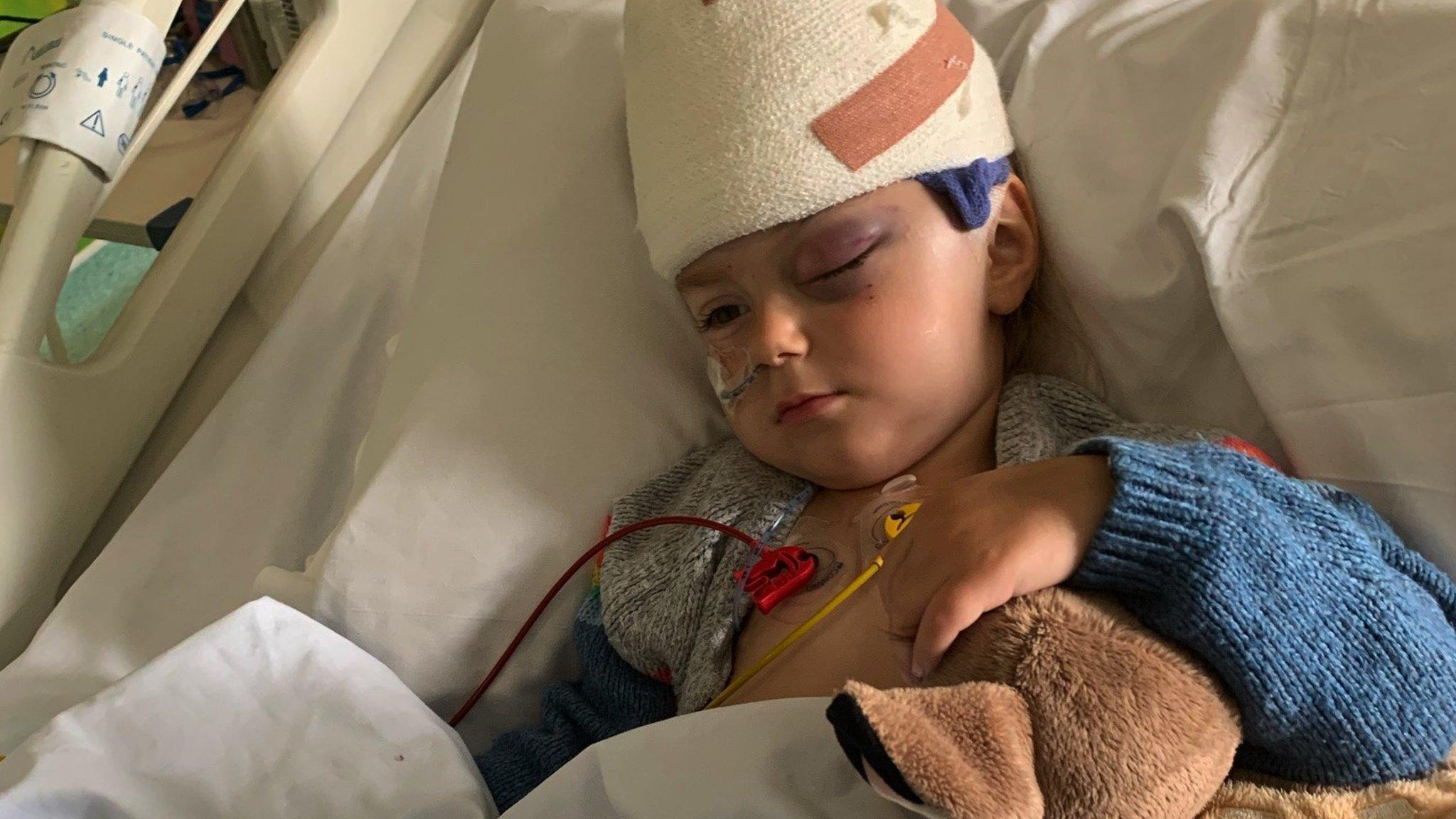Southampton researchers design lazy eye app to help children
- Published

Ben said his seven-year-old daughter Lacie had benefited from using the app
An app has been designed to help with the treatment of lazy eye in children.
The condition, also known as amblyopia, can be treated with a patch over the "good" eye in order to help the other build its link to the brain.
Researchers at the University of Southampton believe their app will reduce some of the stress from that process for both children and parents.
It contains various games that use the phone's camera to detect if the user is wearing their patch properly.

Lacie said the games make her forget about her patch.
Lazy eye affects around one in 50 but needs to be treated before the age of eight to have any meaningful impact.
Ben, whose seven-year-old daughter Lacie is receiving treatment for the condition, said it used to be a "battle" to get her to wear her patch.
However, he said the app made her "instantly forget about the patch because she'd want to play the game more than anything".
"We used to have to kind of force her to wear it," Ben added. "But she's getting a lot better... if she wants to play that game she has to wear the patch."

Symptoms of lazy eye
Shutting one eye or squinting when looking at things
Not being able to follow an object or person with your eyes
Tilting your head when looking at something
Having tired eyes and rubbing your eyes a lot
Headaches
Difficulty catching or throwing
Tripping or falling over a lot
Blinking a lot
Source: NHS

Typically, wearing a patch - often referred to as patching or occlusion therapy - requires covering the unaffected eye for a couple of hours a day. It has a success rate of 50%.
Eye specialists, mathematicians and game designers from the university teamed up to create the software.
Dr Jay Self, a consultant at University Hospital Southampton (UHS), said most of the characters in the games wear a patch themselves.
"That's part of the narrative," he said. "Also some of the games involve using the patch to actually run the games - so the patch is a super power.
"We also have other games that incorporate all sorts of other things such as extra abilities, extra powers etc. if you're wearing the patch that you don't get when you're not wearing the patch."

The app uses the smartphone's camera to detect whether the user is wearing their patch
The technology uses the smartphone's camera to detect whether the child is wearing the patch and encourages them to put it back on if they have taken it off.
The designers hope it will encourage a "positive feeling" for children.
The app is still undergoing trials and further development but is expected to be launched this autumn.

Follow BBC South on Facebook, external, Twitter, external, or Instagram, external. Send your story ideas to south.newsonline@bbc.co.uk.
- Published14 January 2022
